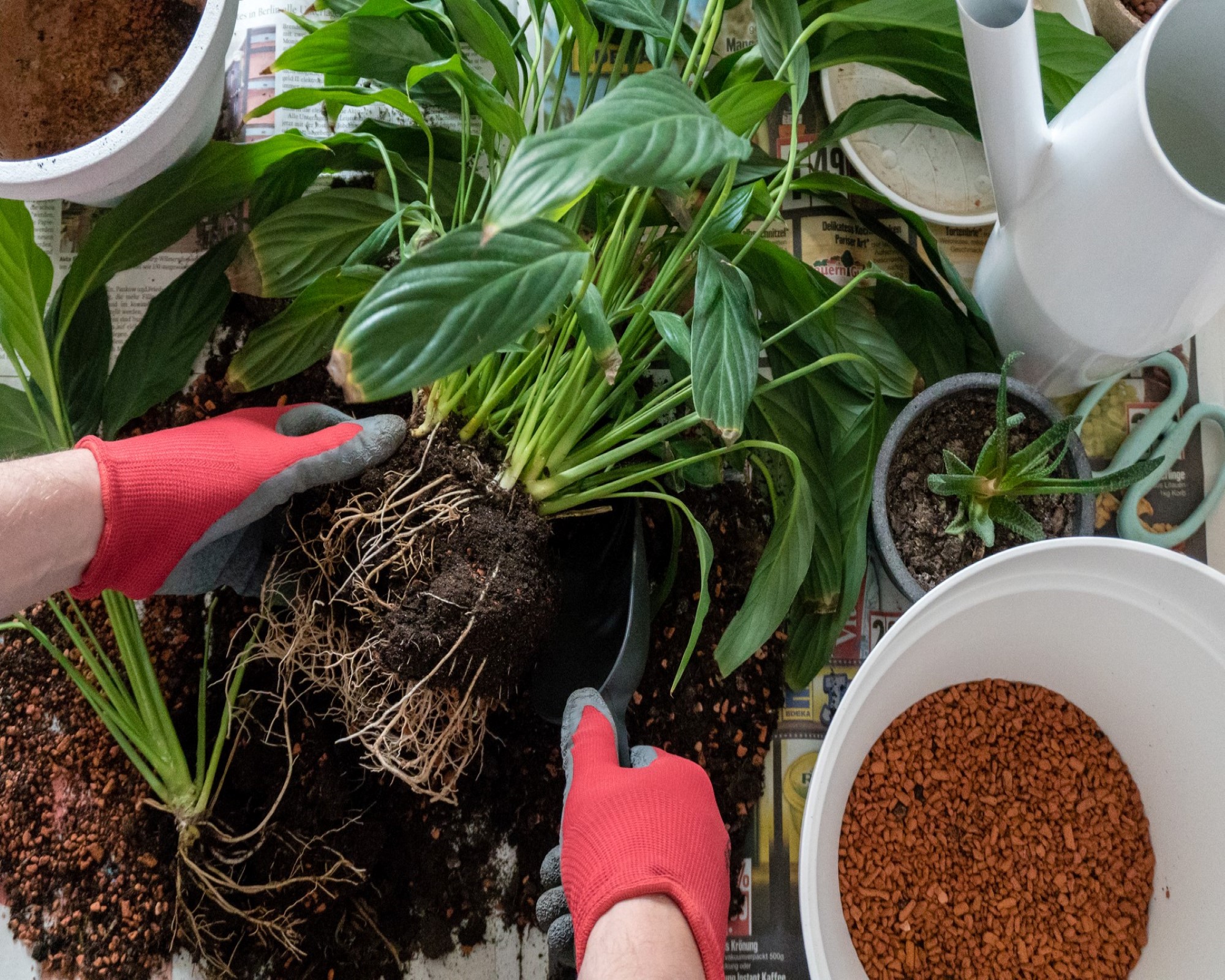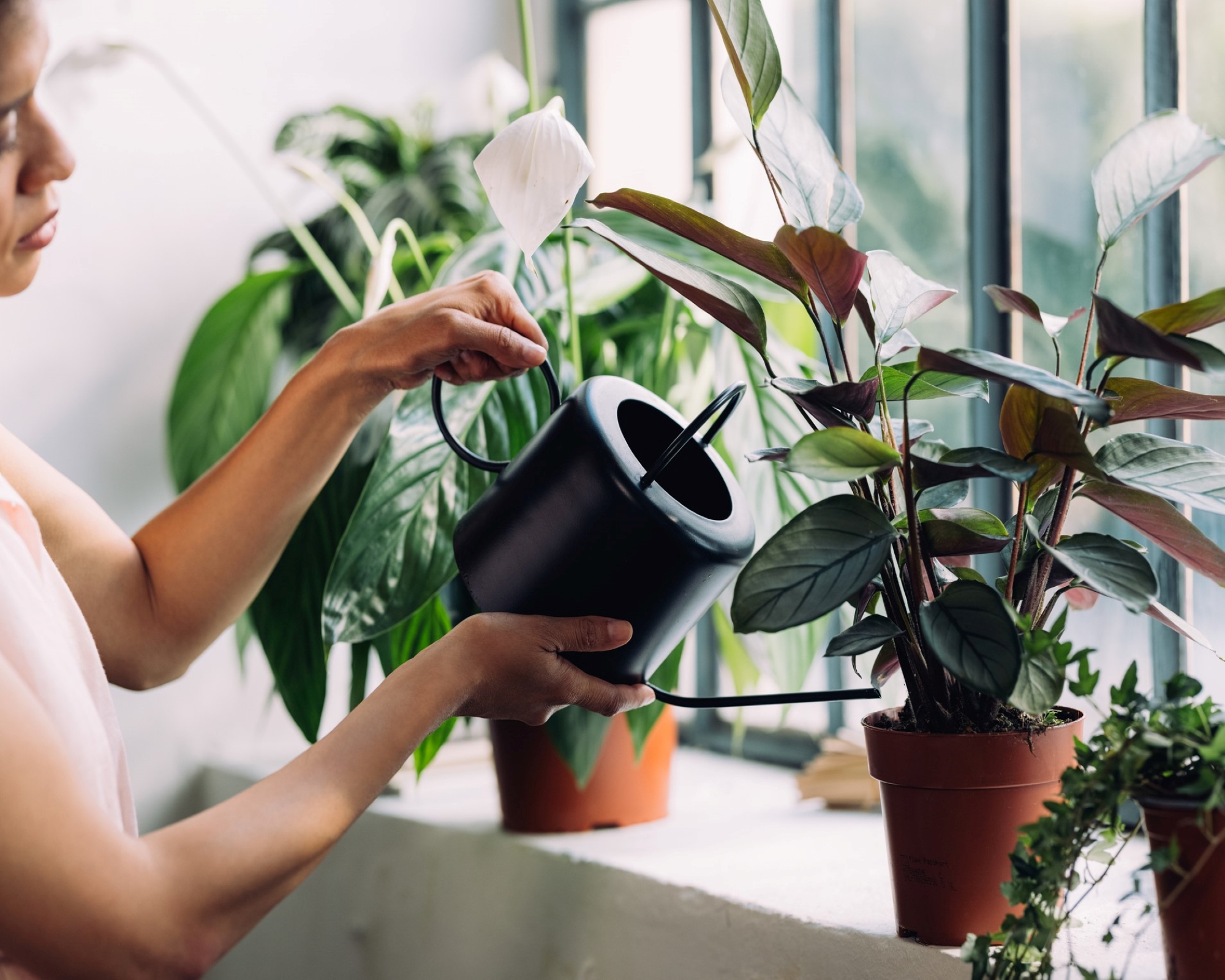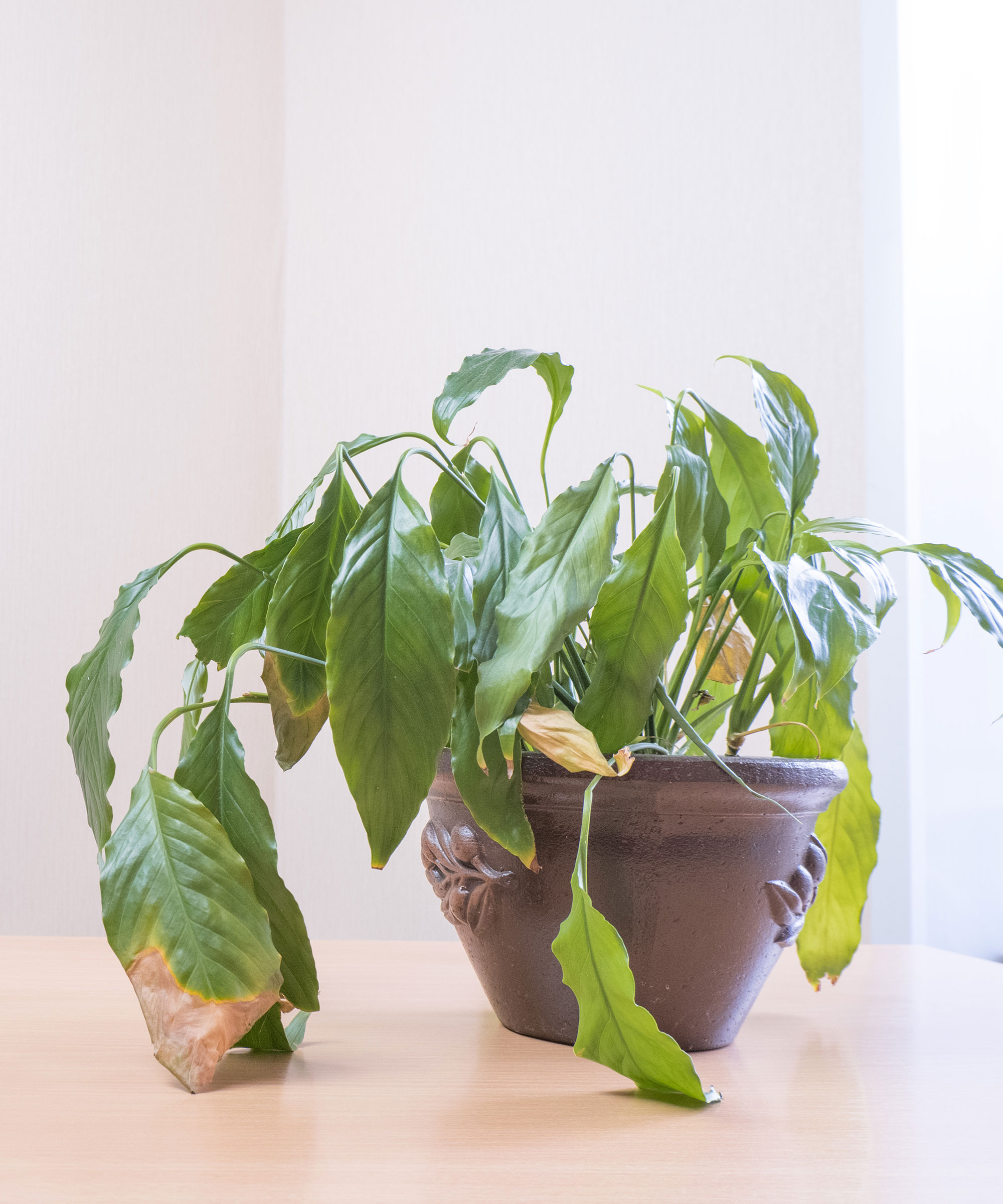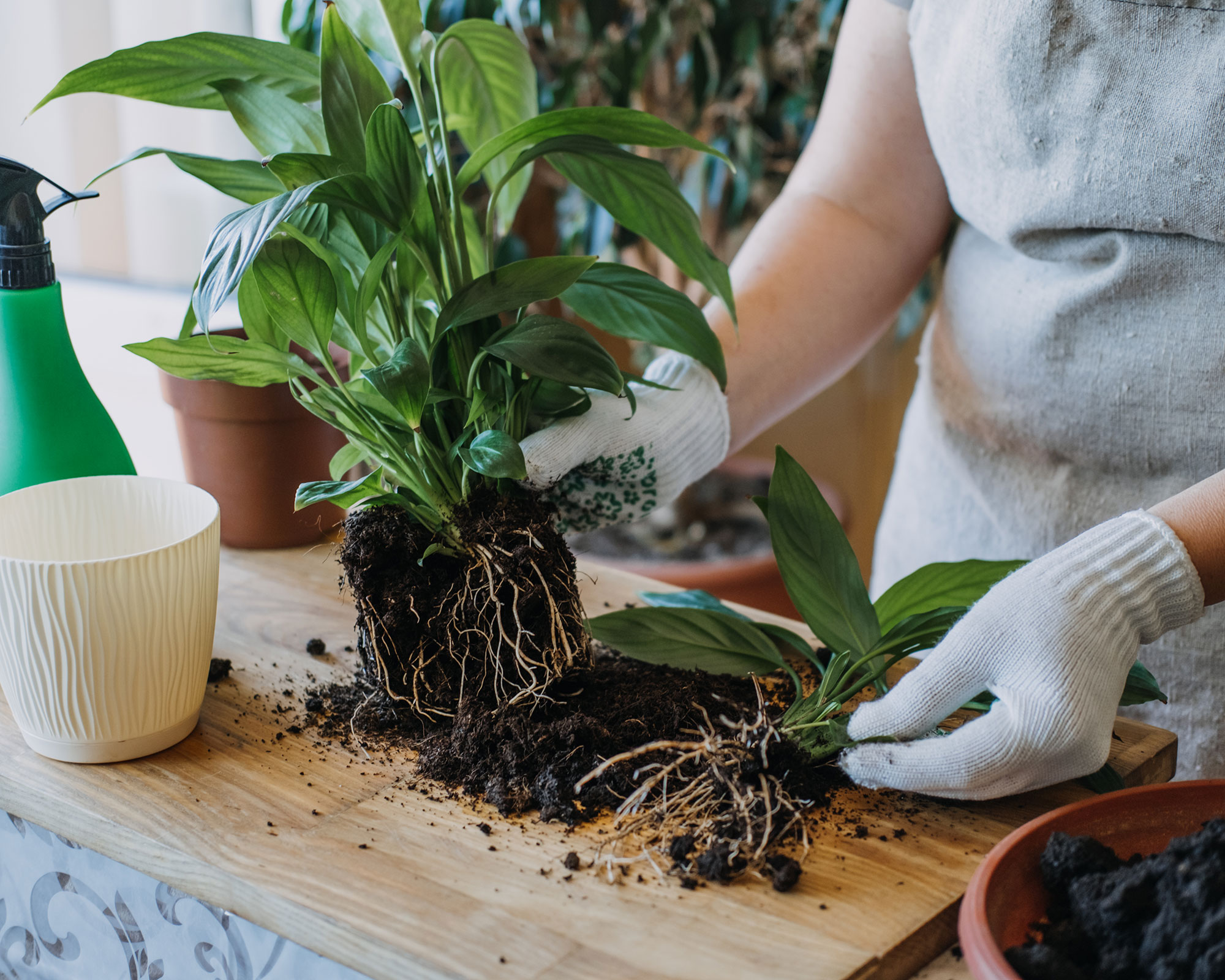5 signs it's time to repot your peace lily, according to houseplant experts
Wondering when to repot a peace lily? These are the main signs that it's time to complete this simple task


Knowing when to repot a peace lily is important if you want to keep this popular plant looking its best.
Peace lilies are popular plants that are generally low-maintenance and are known for their pretty white or pink flowers and green foliage. However, like most other houseplants, a peace lily will eventually suffer if it's outgrown its pot.
Repotting is an essential element of peace lily care and is best done on a regular basis.

How to work out when to repot a peace lily
If you're not sure whether your peace lily needs repotting, look out for these telltale signs that your indoor plant needs a new pot right now.
1. You can see roots coming through the drainage holes
This is by far the most common sign that your peace lily needs repotting and the easiest sign to identify: simply lift your plant and inspect the bottom for any roots that are making their way out.
Alex Tinsman, a gardener from HowToHouseplant.com, explains that 'the roots that are outside the pot will not be able to water properly and repotting helps address that problem.'
Stephen Webb, editor and founder of Garden's Whisper, a website specializing in gardening, adds that 'over time, peace lilies will gradually build up an extensive network of roots that need more space to grow and develop properly.'
Learning how to repot a plant correctly will make sure you give it the space it needs.
2. Roots are coiling around too much
Another common sign of a peace lily that needs repotting is a root system that is wrapping around the soil in the pot too many times. Alex Tinsman says that 'the excess coiling limits the absorption of nutrients which may lead to the death of the plants.'
How much coiling is too much coiling? Well, you'll have to use your judgment here, but if the roots have wrapped around the soil so many times that you can't really see it anymore, it's definitely time to repot your peace lily.

3. You need to water your peace lily all the time
This is a less common sign of a peace lily that needs repotting. According to Stephen Webb, 'if the soil starts to dry out more quickly than usual', then you should consider repotting your peace lily plant. It makes sense: the overcrowded roots system will be thirstier than normal, so if you start noticing that you are watering plants almost every day and it's still dry, you need to repot.

4. Your peace lily is looking generally unhealthy
If you look after your peace lily well, giving it adequate light and water levels and a stable temperature to thrive, and it's still not looking well, you may need to repot it.
Stephen Webb points out that 'if your peace lily begins to develop brown or yellow leaves or grows noticeably slower than usual, this can indicate that your plant needs more room.'
It's worth knowing that there could be other reasons why your peace lily is turning yellow too, such as incorrect watering and being placed in the wrong location in your indoor garden.

5. Your peace lily has stopped blooming
Peace lilies are fairly low maintenance indoor plants, so if it is getting plenty of light and water but has stopped blooming, it may be a sign that it is potbound. Plants need a lot of energy to produce flowers, so a plant that is failing to flower for no apparent reason is likely stressed in a way that's not immediately visible.
Lift your plant out of the pot to see if it's root bound. 'if you notice that your plant has stopped blooming, it may be time for a larger pot,' confirms Violet Joy Miller, a professional gardener and founder of Greeny Thumbs.

How do I know if my peace lily is root bound?
You'll know this by inspecting the roots. Try lifting the peace lily out of its pot: a rootbound plant will give a lot of resistance. In severe cases, you may not be able to remove it at all and will need to cut open or even break the pot it's currently in.
If you are able to lift the peace lily out of its pot, look at the roots. A healthy root system will still be showing plenty of soil. If the root ball is completely wrapped around the soil multiple times, or it so long that it's coming out of the drainage holes, your peace lily is potbound.
Anna writes about interior design and gardening. Her work has appeared in Homes & Gardens, Livingetc, and many other publications. She is an experienced outdoor and indoor gardener and has a passion for growing roses and Japanese maples in her outside space.
